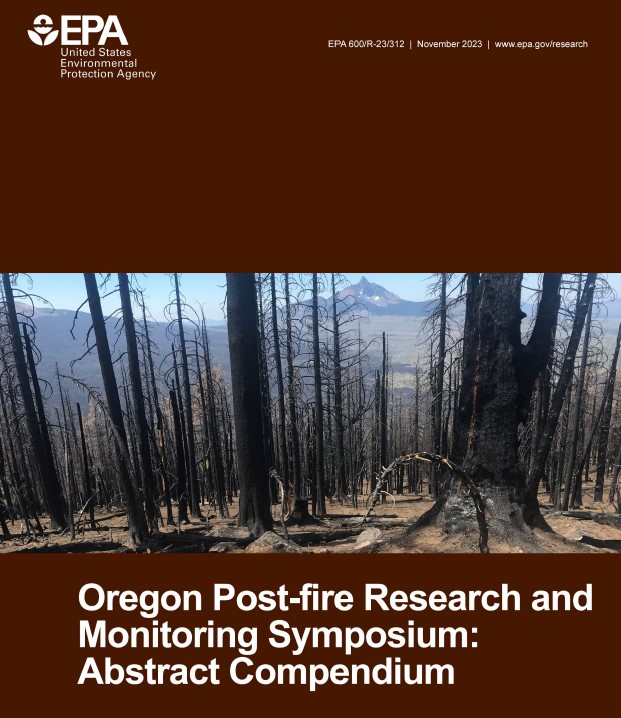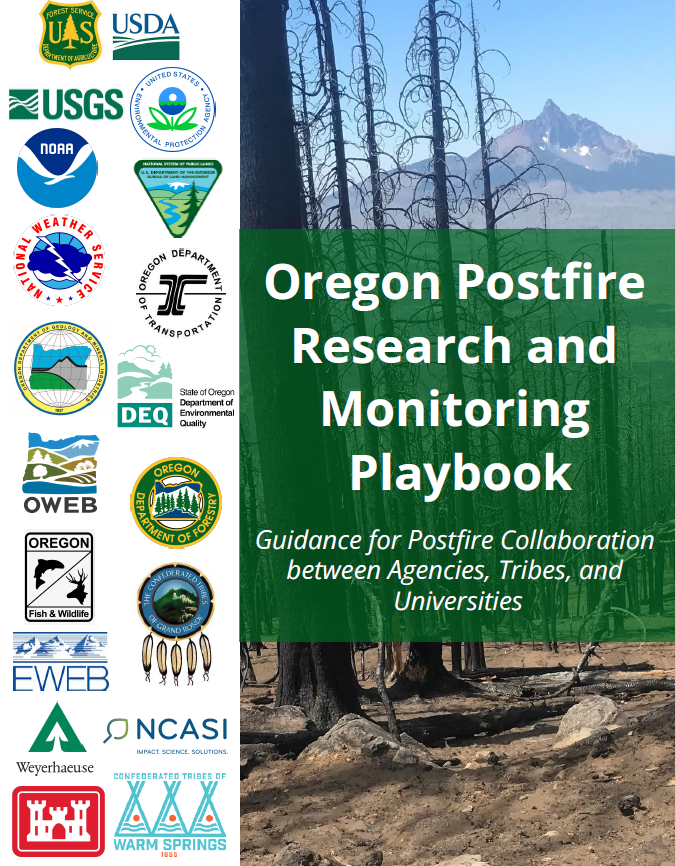Estimated reading time: 2 minutes
The Oregon Post-Fire Research and Monitoring Collaborative facilitates communication of post-fire research and monitoring initiatives across diverse agencies and organizations. It also develops valuable resources that enhance accessibility to post-fire information.
Large wildfires have landscape-level impacts that cross land management boundaries. However, formal networks facilitating collaborative post-fire research and monitoring efforts remain scarce. In 2020, five megafires (>100,000 acres) in western Oregon—known as the 2020 Labor Day Fires—burned more than 1.2 million acres of land, destroyed upwards of 5,000 homes and businesses, and resulted in the loss of human life. The 2020 wildfire season was the most destructive on record in Oregon. Following this season and at the behest of Oregon’s governor, several state and federal agencies, along with universities, tribes, and other organizations, formed a collaborative to foster awareness of each other's activities and coordinate post-fire research and monitoring efforts. This collaborative seeks to increase awareness among entities conducting post-fire research and monitoring in Oregon. This will facilitate efficient investment of resources and promote collaboration among various organizations responsible for fire prevention, mitigation, restoration, research, and monitoring. Since 2021, the collaborative has created resources and hosted a symposium to increase post-fire research and monitoring collaboration across the state.
The collaborative developed a Post-Fire Research and Monitoring Catalog which enables practitioners to quickly find where scientific information is being collected, who is collecting it, and what indicators are being measured. The catalog provides critical information and resource gaps in current post-fire research and monitoring efforts and can empower partnerships to address the limitations of individual organizations.
The collaborative also hosted the Oregon Post-Fire Research and Monitoring Symposium at Oregon State University on February 7th–9th, 2023. The symposium focused on research and monitoring completed after the 2020 westside fires in Oregon. In addition, it provided an opportunity for natural resource professionals, science providers, policy makers, and others interested in this topic to connect. The symposium consisted of 38 speaker presentations, 45 poster presentations, and 3 panels. Approximately 750 participants attended some portion of the event, with nearly half attending in person. The Oregon Post-Fire Research and Monitoring Symposium: Abstract Compendium provides a summary of the symposium and includes the agenda, abstracts for each presentation, and overviews of the main topics discussed at the event.
Recently, the collaborative released the Postfire Research and Monitoring Playbook. This resource aims to increase awareness among those conducting postfire research and monitoring in Oregon. This will facilitate efficient resource investment and promote collaboration and coordination among various organizations responsible for fire prevention, risk reduction, restoration, research, and monitoring.
The collaborative and its efforts are supported by the USDA Northwest Climate Hub.
-
Post-Fire Catalog of Research and Monitoring Projects After the 2020 Labor Day Fires

-
Oregon Post-Fire Research and Monitoring Symposium: Abstract Compendium

-
Oregon Postfire Research and Monitoring Playbook

Collaborative Postfire Research and Monitoring: Supporting Oregon’s Natural and Cultural Resources Recovery Task Force is the USDA Forest Service webpage for the collaborative.
The Northwest Fire Science Consortium has a webpage that includes all of the recordings for the symposium.




